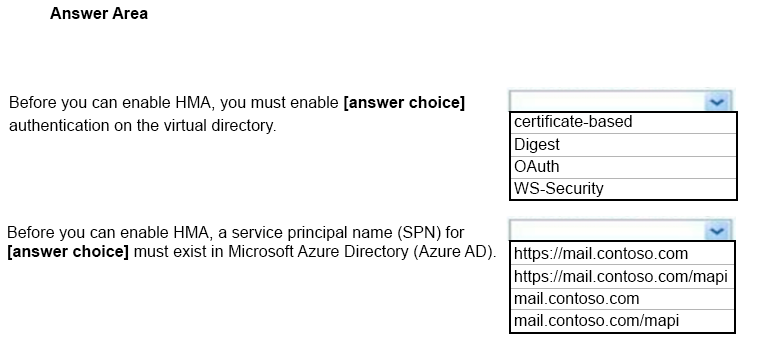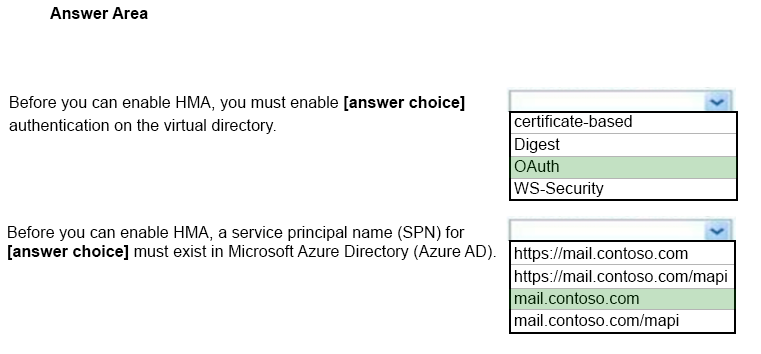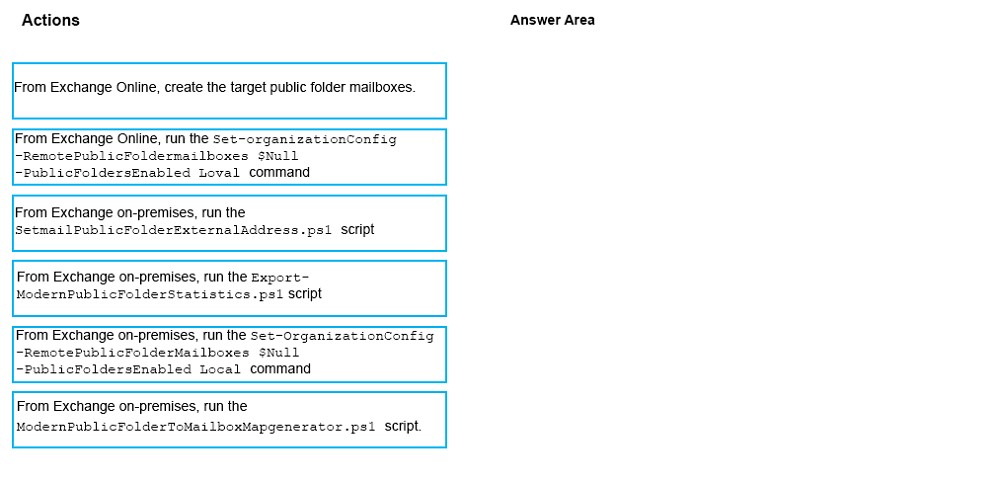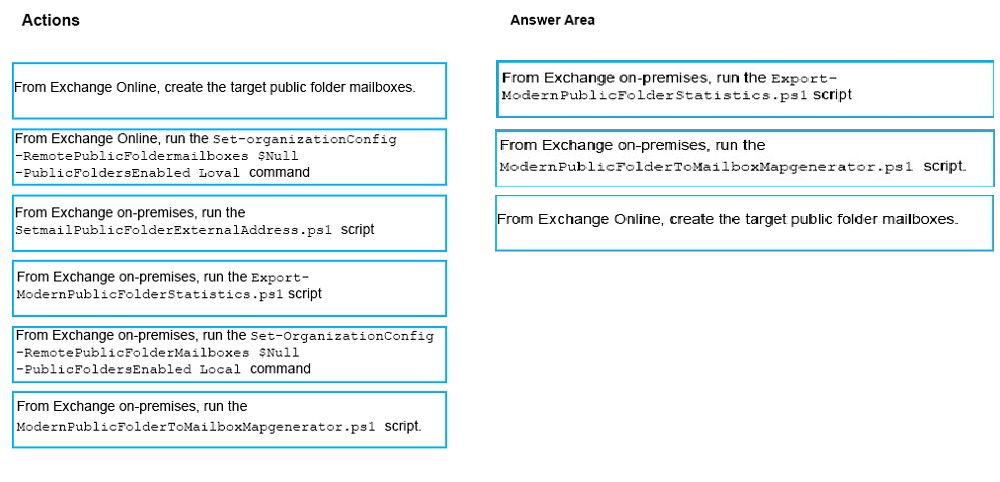You have a Microsoft Exchange Server 2019 organization.
You plan to purchase a Microsoft 365 E5 subscription and create a hybrid deployment.
You are evaluating the security requirements for communication between the on-premises organization and Exchange Online.
You need to ensure that Exchange Online services can access the necessary on-premises virtual directories.
Which two on-premises virtual directories should be accessible to Exchange Online services? Each correct answer presents part of the solution.
NOTE: Each correct selection is worth one point.




